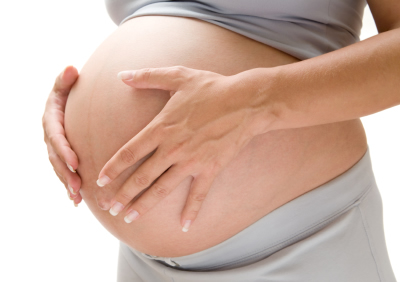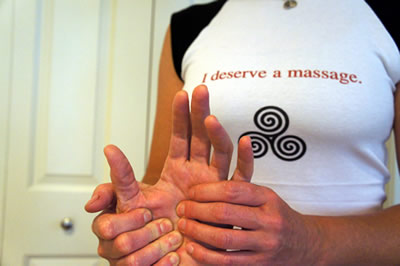Massage Modalities:
Your massage will be unique to your individual wants and needs. This usually means the utilization of various techniques from many of these modalities in each massage session.
 Prenatal: Your body is making a human being. That’s hard work! A soothing and relaxing massage in the 2nd and 3rd trimester can help mothers-to-be feel calm, nurtured and appreciated. Addressing specific bodywork needs and providing unique positioning maximizes your comfort. Many pregnant clients end up falling asleep and feel that is just what they needed!
Prenatal: Your body is making a human being. That’s hard work! A soothing and relaxing massage in the 2nd and 3rd trimester can help mothers-to-be feel calm, nurtured and appreciated. Addressing specific bodywork needs and providing unique positioning maximizes your comfort. Many pregnant clients end up falling asleep and feel that is just what they needed!
Postpartum: NO ONE WORKS HARDER THAN A MOM. It takes a toll on our bodies! We are often emotionally and physically exhausted. Moms, we need and deserve to take care of ourselves! Massage can help to calm your nervous system, reduce muscle tension and re-energize you so that you can continue to be the awesome mom that you are. Many people consider the postpartum period to be only a few months past childbirth. I consider it to be forever past childbirth.
Swedish: Swedish massage is a gentle, rhythmic massage administered to relax soft body tissue and facilitate healing. It is lighter in touch than other forms of massage and includes long flowing strokes, kneading, and friction techniques on more superficial layers of the muscles. It can loosen stiff joints, reduce muscle tension and ease stress and anxiety. I incorporate Swedish strokes into all of my sessions, leaving you feeling relaxed yet rejuvenated.
 Deep Tissue: Deep tissue massage is designed to relieve severe tension in the muscle and the connective tissue or fascia. This type of massage focuses on the muscles located below the surface of the superficial muscles. Deep tissue helps to lengthen shortened muscle fibers, breaking up thickened areas and helping the tissue regain proper elasticity. Deep tissue massage is often recommended for individuals who experience consistent pain, are involved in heavy physical activity (such as athletes), and clients who have sustained physical injury.
Deep Tissue: Deep tissue massage is designed to relieve severe tension in the muscle and the connective tissue or fascia. This type of massage focuses on the muscles located below the surface of the superficial muscles. Deep tissue helps to lengthen shortened muscle fibers, breaking up thickened areas and helping the tissue regain proper elasticity. Deep tissue massage is often recommended for individuals who experience consistent pain, are involved in heavy physical activity (such as athletes), and clients who have sustained physical injury.
Myofascial Release: Myofascial Release, or MFR, focuses on the fascia, or connective tissue of the muscle. When connective tissue is tight, underlying structures are often pulled out of alignment, affecting posture and causing pain. MFR uses techniques to lengthen the fascia and help release it from underlying tissue. Myofascial Release is effective for helping with postural issues, increasing blood circulation, restoring elasticity and decreasing pain and tension.
Neuromuscular Therapy: Neuromuscular Therapy is the utilization of static pressure on specific myofascial points to relieve pain. Commonly referred to as trigger point therapy, this type of treatment helps to release these points, or “knots”, of muscle spasm, often caused by injury or overuse.
Sports: Sports massage is, generally, geared towards athletes and usually given before or after an athletic event. Before an event, it is used to promote peak performance, improve flexibility, and reduce the risk of injury. It is used after an event to help reduce muscle soreness and swelling, break down toxins, and increase blood circulation.
 Injury Rehabilitation: Massage has been shown to be beneficial in recovery from a variety of injuries. Anything from whiplash from an auto accident, to a strained or torn tendon, to recovery after various types of surgery. Many techniques can be used in this healing process, such as contrast therapy (application of ice and heat), trigger point therapy, myofascial release, and muscle energy techniques (specific muscle stretching).
Injury Rehabilitation: Massage has been shown to be beneficial in recovery from a variety of injuries. Anything from whiplash from an auto accident, to a strained or torn tendon, to recovery after various types of surgery. Many techniques can be used in this healing process, such as contrast therapy (application of ice and heat), trigger point therapy, myofascial release, and muscle energy techniques (specific muscle stretching).
Orthopedic: Orthopedic massage involves a thorough therapeutic assessment to identify unknown causes of pain, and manipulation and movement of soft tissue to reduce pain and dysfunction. In simple terms, if a client comes in complaining of chronic shoulder pain, let’s work to figure out what is possibly causing the pain, then work to decrease the pain and learn self-care techniques to prevent pain from returning. If it is determined that treatment for a condition is out of my scope of practice, I will refer clients to the appropriate professionals.
Chair: Chair, or seated massage, makes use of a special, comfortable massage chair the the fully clothed client is seated in and receives treatment on the back, neck, arms, and hands. A client can be seated facing outward as well, providing access to legs and feet. Chair massage is very helpful for workers who sit for long hours and/or use computers in preventing serious conditions such as carpel tunnel syndrome, rounded shoulder/head forward postural problems, and other work-related conditions. Chair massage also helps to reduce tension and pain, relieve stress, and increase circulation.